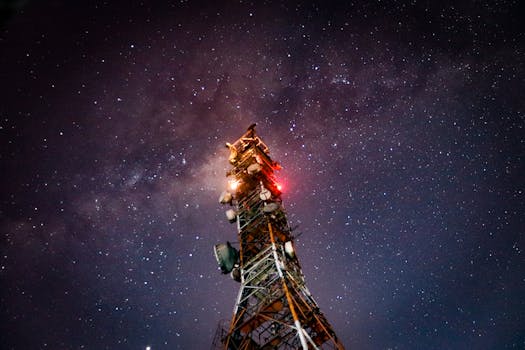
MEO satellites, or Medium Earth Orbit satellites, are a type of satellite that operates at an altitude of around 20,000 to 36,000 kilometers above the Earth’s surface. MEO satellites have been gaining popularity in recent years due to their unique advantages over other types of satellites, such as Geostationary Orbit (GEO) and Low Earth Orbit (LEO) satellites. At the beginning of the MEO satellites era, the focus was on providing global coverage and high-capacity connectivity, and this is still the case today.
In this article, we will delve into the world of MEO satellites, exploring their history, benefits, and applications. We will also examine the current state of the MEO satellite industry and what the future holds for this exciting technology.
History of MEO Satellites
The concept of MEO satellites has been around for several decades, but it wasn’t until the 1990s that the first MEO satellite systems were launched. One of the pioneers in this field was the Globalstar constellation, which was launched in 1998. The Globalstar system consisted of 48 satellites in MEO, providing mobile voice and data services to users around the world.
Since then, several other MEO satellite systems have been launched, including the O3b (Other 3 Billion) network, which was launched in 2013. The O3b network provides high-speed internet connectivity to underserved communities around the world, with a focus on emerging markets.
Benefits of MEO Satellites
So, what makes MEO satellites so special? There are several benefits to using MEO satellites, including:
Lower latency compared to GEO satellites, which can result in significant delays in signal transmission. MEO satellites have a much shorter signal transmission time, making them ideal for real-time applications such as video conferencing and online gaming.
Global coverage, allowing users to access the satellite’s signal from anywhere in the world. This is particularly useful for applications such as maritime and aeronautical communications, where users need to stay connected while on the move.
Higher capacity than LEO satellites, making them more suitable for high-bandwidth applications such as video streaming and cloud computing.
Applications of MEO Satellites
MEO satellites have a wide range of applications, including:
Mobile voice and data services, such as those provided by Globalstar and other mobile satellite operators.
Broadband internet access, particularly in underserved communities where terrestrial infrastructure is lacking. The O3b network is a prime example of this, providing high-speed internet connectivity to remote and rural areas.
Maritime and aeronautical communications, where MEO satellites provide a reliable and global means of staying connected while at sea or in the air.
Current State of the MEO Satellite Industry
The MEO satellite industry is rapidly evolving, with several new systems and technologies being developed. One of the most significant trends in the industry is the move towards higher-throughput satellites, which can provide faster and more reliable connections to users.
Another trend is the increasing use of MEO satellites for IoT (Internet of Things) applications, such as smart cities and industrial automation. MEO satellites provide a reliable and global means of connecting IoT devices, enabling real-time monitoring and control of critical infrastructure.
Conclusion
In conclusion, MEO satellites are revolutionizing the way we communicate globally, offering faster and more reliable connections than ever before. With their unique advantages over other types of satellites, MEO satellites are poised to play a major role in the future of global communication. As the industry continues to evolve, we can expect to see even more innovative applications of MEO satellite technology, from IoT and smart cities to mobile voice and data services.
As we look to the future, it is clear that MEO satellites will remain a vital part of the global communication landscape, providing connectivity to underserved communities and enabling new and innovative applications. Whether you are a consumer, business, or government agency, MEO satellites have the potential to transform the way you communicate and access information.
The use of MEO satellites is not limited to any specific region or country, and their global coverage makes them an ideal solution for international communications. With the increasing demand for faster and more reliable connections, the MEO satellite industry is expected to continue growing, with new systems and technologies being developed to meet the needs of users around the world.
In addition to their technical advantages, MEO satellites also offer a range of economic benefits, from reducing the cost of communication services to enabling new business models and revenue streams. As the industry continues to evolve, we can expect to see even more innovative applications of MEO satellite technology, from mobile payments and banking to e-commerce and online education.
Overall, the future of MEO satellites looks bright, with a wide range of applications and use cases emerging. Whether you are a seasoned industry professional or just starting to learn about MEO satellites, it is clear that this technology has the potential to transform the way we communicate and access information.
As we move forward, it will be exciting to see how MEO satellites continue to shape the global communication landscape, enabling new and innovative applications, and providing connectivity to underserved communities around the world.
In the next few years, we can expect to see significant advancements in MEO satellite technology, from the development of new satellite systems and constellations to the introduction of new services and applications. With the increasing demand for faster and more reliable connections, the MEO satellite industry is poised for rapid growth, and it will be exciting to see how this technology continues to evolve and improve.
One of the key drivers of this growth will be the increasing use of MEO satellites for IoT applications, such as smart cities and industrial automation. As the number of connected devices continues to grow, MEO satellites will provide a reliable and global means of connecting these devices, enabling real-time monitoring and control of critical infrastructure.
In conclusion, the future of MEO satellites is bright, with a wide range of applications and use cases emerging. From mobile voice and data services to IoT and smart cities, MEO satellites have the potential to transform the way we communicate and access information.
As the industry continues to evolve, we can expect to see even more innovative applications of MEO satellite technology, from mobile payments and banking to e-commerce and online education. With their unique advantages over other types of satellites, MEO satellites are poised to play a major role in the future of global communication.
The use of MEO satellites will not be limited to any specific region or country, and their global coverage makes them an ideal solution for international communications. With the increasing demand for faster and more reliable connections, the MEO satellite industry is expected to continue growing, with new systems and technologies being developed to meet the needs of users around the world.
In addition to their technical advantages, MEO satellites also offer a range of economic benefits, from reducing the cost of communication services to enabling new business models and revenue streams. As the industry continues to evolve, we can expect to see even more innovative applications of MEO satellite technology, from mobile payments and banking to e-commerce and online education.
Overall, the future of MEO satellites looks bright, with a wide range of applications and use cases emerging. Whether you are a seasoned industry professional or just starting to learn about MEO satellites, it is clear that this technology has the potential to transform the way we communicate and access information.
As we move forward, it will be exciting to see how MEO satellites continue to shape the global communication landscape, enabling new and innovative applications, and providing connectivity to underserved communities around the world.
The development of new satellite systems and constellations will be a key driver of this growth, with several new systems being launched in the next few years. These new systems will provide faster and more reliable connections, enabling new and innovative applications such as IoT, smart cities, and industrial automation.
In conclusion, the future of MEO satellites is bright, with a wide range of applications and use cases emerging. From mobile voice and data services to IoT and smart cities, MEO satellites have the potential to transform the way we communicate and access information.
As the industry continues to evolve, we can expect to see even more innovative applications of MEO satellite technology, from mobile payments and banking to e-commerce and online education. With their unique advantages over other types of satellites, MEO satellites are poised to play a major role in the future of global communication.
The use of MEO satellites will not be limited to any specific region or country, and their global coverage makes them an ideal solution for international communications. With the increasing demand for faster and more reliable connections, the MEO satellite industry is expected to continue growing, with new systems and technologies being developed to meet the needs of users around the world.
In addition to their technical advantages, MEO satellites also offer a range of economic benefits, from reducing the cost of communication services to enabling new business models and revenue streams. As the industry continues to evolve, we can expect to see even more innovative applications of MEO satellite technology, from mobile payments and banking to e-commerce and online education.
Overall, the future of MEO satellites looks bright, with a wide range of applications and use cases emerging. Whether you are a seasoned industry professional or just starting to learn about MEO satellites, it is clear that this technology has the potential to transform the way we communicate and access information.
As we move forward, it will be exciting to see how MEO satellites continue to shape the global communication landscape, enabling new and innovative applications, and providing connectivity to underserved communities around the world.
The development of new satellite systems and constellations will be a key driver of this growth, with several new systems being launched in the next few years. These new systems will provide faster and more reliable connections, enabling new and innovative applications such as IoT, smart cities, and industrial automation.
In conclusion, the future of MEO satellites is bright, with a wide range of applications and use cases emerging. From mobile voice and data services to IoT and smart cities, MEO satellites have the potential to transform the way we communicate and access information.
With their unique advantages over other types of satellites, MEO satellites are poised to play a major role in the future of global communication. As the industry continues to evolve, we can expect to see even more innovative applications of MEO satellite technology, from mobile payments and banking to e-commerce and online education.
The use of MEO satellites will not be limited to any specific region or country, and their global coverage makes them an ideal solution for international communications. With the increasing demand for faster and more reliable connections, the MEO satellite industry is expected to continue growing, with new systems and technologies being developed to meet the needs of users around the world.
Overall, the future of MEO satellites looks bright, with a wide range of applications and use cases emerging. Whether you are a seasoned industry professional or just starting to learn about MEO satellites, it is clear that this technology has the potential to transform the way we communicate and access information.
